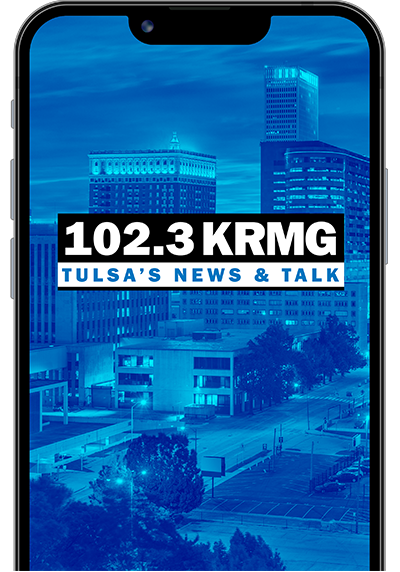The Gun Violence Archive is a nonprofit digital database that houses detailed information on gun injuries and deaths. It began tracking shootings through media and police reports in 2014. By the end of 2023, a decade of data had been amassed, and The Trace looked for patterns.
As reported in its series "A Decade of American Gun Violence," The Trace found the hidden toll of shootings in rural areas, near schools, and on the road. Here are some of the biggest takeaways.
You're more likely to be shot in the rural South than in big cities like Chicago
Gun violence is often associated with urban areas, but The Trace's review found that half of all shootings occurred outside large cities, in communities of fewer than 1 million people. Thirteen of the 20 towns and cities with the highest rates of shootings were located in the South.
Clarksdale, Mississippi; Selma, Alabama; and Laurinburg, North Carolina—each with a metro population of less than 100,000 people—were among the places that saw more people shot per capita in 2023 than Chicago, Philadelphia, and Washington, D.C.
"People generally think of gun violence as an urban issue, but we're learning that is not always the case," said Shani Buggs, a community violence researcher at the University of California, Davis. "There are rural areas with higher rates of gun violence than some urban areas."
Large Democratic-run cities are getting safer, despite what Republican politicians say
At an August campaign event in Michigan, President Donald Trump said that cities led by Democrats were awash in violence. "It's just insane," he said. "But you can't walk across the street to get a loaf of bread. You get shot, you get mugged, you get raped, you get whatever it may be."
In reality, shooting deaths through the end of October were down more than 10 percent from 2023 nationwide, according to The Trace's analysis. The decreases were most pronounced in the Democratic-run large cities with substantial nonwhite populations and histories of elevated gun violence that Trump and other GOP politicians routinely paint as out of control.
Road rage shootings are on the rise
Drivers are increasingly using firearms to vent their anger, causing shootings to become more common on the country's roads and highways.
Between 2014 and 2023, The Trace found, the number of people shot in road rage incidents surged more than 400 percent, from 92 to 481. All told, angry drivers shot 3,095 people over that decade, or nearly one every day. One in four of those victims—777—were killed.
Shootings happen near K-12 schools with alarming frequency
National attention is understandably focused on shootings that happen on campuses during school hours. But the reality is that shootings near schools—just down the block or across the street—are far more common. The Trace looked at GVA data for shootings that took place within 500 yards of all public and private K-12 schools. That is about four blocks in a typical city, and the distance at which a gunshot is still clearly audible.
The analysis found that there were at least 188,080 such shootings over the decade examined—or 57 a day. In 2023 alone, more than 6 million children attended a school that had at least one shooting nearby.
Though gun violence has returned to normal levels in many places, the aftermath of the COVID-era surge persists
Gun violence has a long tail, and the grief and shock of the spike in shootings that accompanied COVID-19 will be felt for years to come.
To better understand the scope of the loss, The Trace analyzed shootings that occurred between 2020, when the surge began, and 2024, when many places saw gun violence return to pre-pandemic levels.
The analysis showed that approximately 18,126 more people died than would have if gun violence had remained at its 2019 level.
While shootings increased nationwide and across all races and ethnicities, the places hit hardest by the surge were majority Black and brown neighborhoods in big cities. In other words, the burden largely landed on areas that were already struggling with a disproportionate share of shootings and deaths.
Gun rights supporters said removing permitting requirements for carrying guns would make people safer. It hasn't
Over the past decade, a majority of states have passed laws allowing people to carry firearms in public without a permit or training. Gun rights supporters said removing roadblocks to gun carrying would prompt more people to do so, deterring shootings. But by that metric, permitless carry appears to have failed.
The Trace found that 16 of the 20 states that enacted permitless carry between 2015 and 2022 saw more shooting deaths—excluding suicides—after the laws took effect than during an equivalent time period before.
In Missouri—where a February mass shooting at a Super Bowl victory parade renewed public criticism of permitless carry—average monthly shooting fatalities, adjusted for population, were 28.7 percent higher in the three years after the law's introduction than the three years before.
Dozens of cities are paying for a gunshot detection system they may not need
ShotSpotter uses acoustic sensors positioned on lampposts and streetlights to pick up the sound of gunfire and alert police to its location. The Trace identified 62 cities that have installed the system despite averaging fewer than one shooting injury or death per month over the past decade. Of those 62 cities, 43 were located in states that received an "A" grade from Giffords, the gun violence prevention group, for their strong firearm restrictions.
ShotSpotter typically costs $65,000 to $90,000 for each square mile covered by sensors. While the company behind the technology says the low-violence cities are just being proactive, others believe the money would be better spent elsewhere.
"ShotSpotter is a tool to more effectively respond to gun violence," said Eric Piza, a criminology professor at Northeastern University. "A requirement of that tool meeting its goals would be some level of a gun violence problem."







